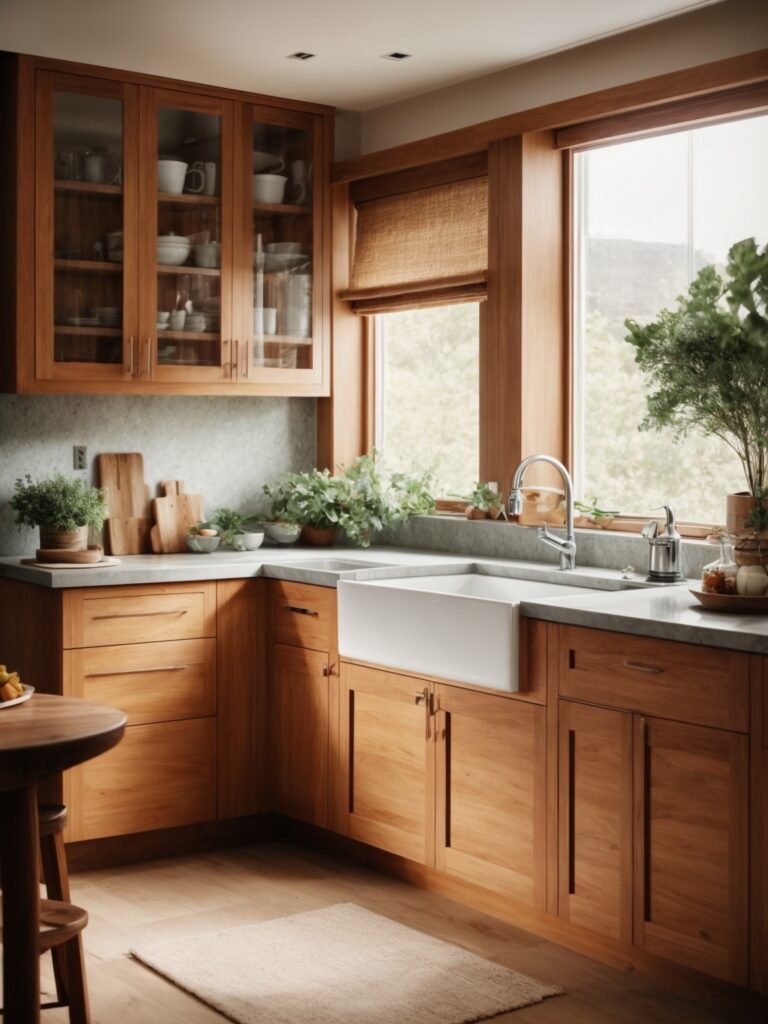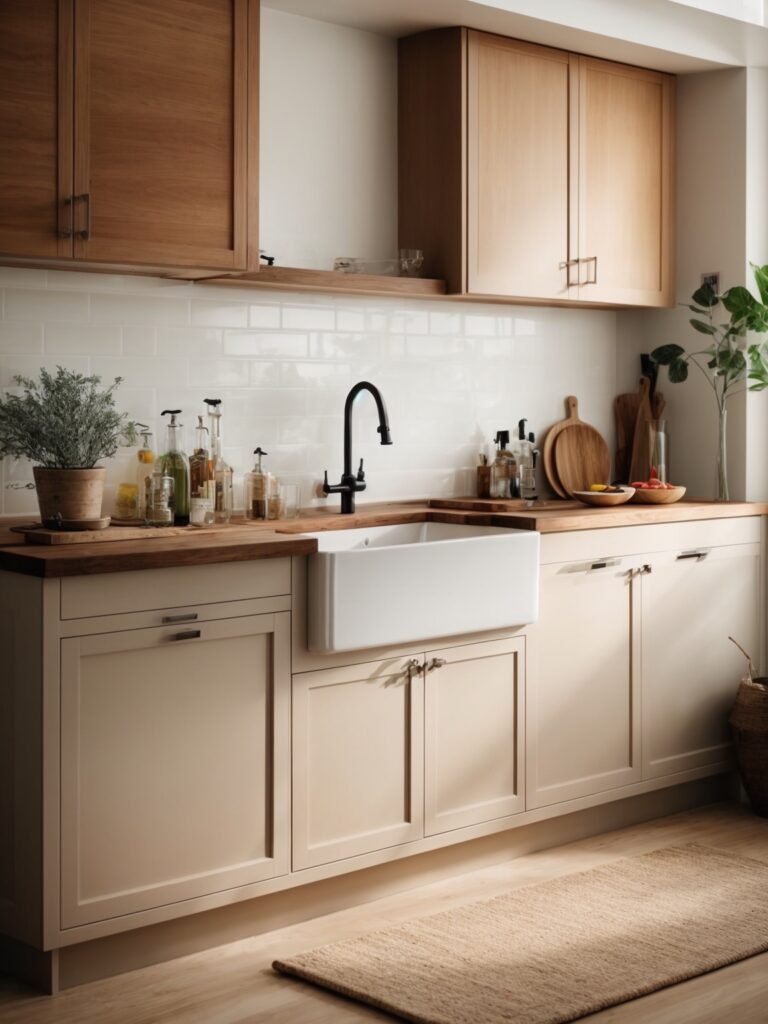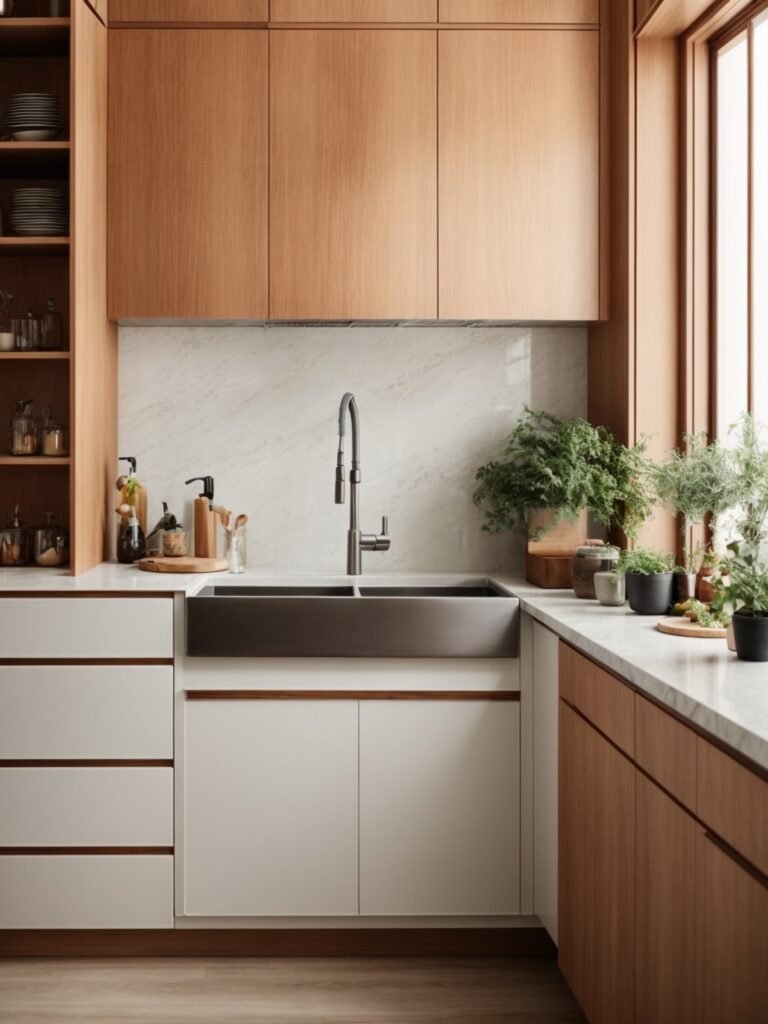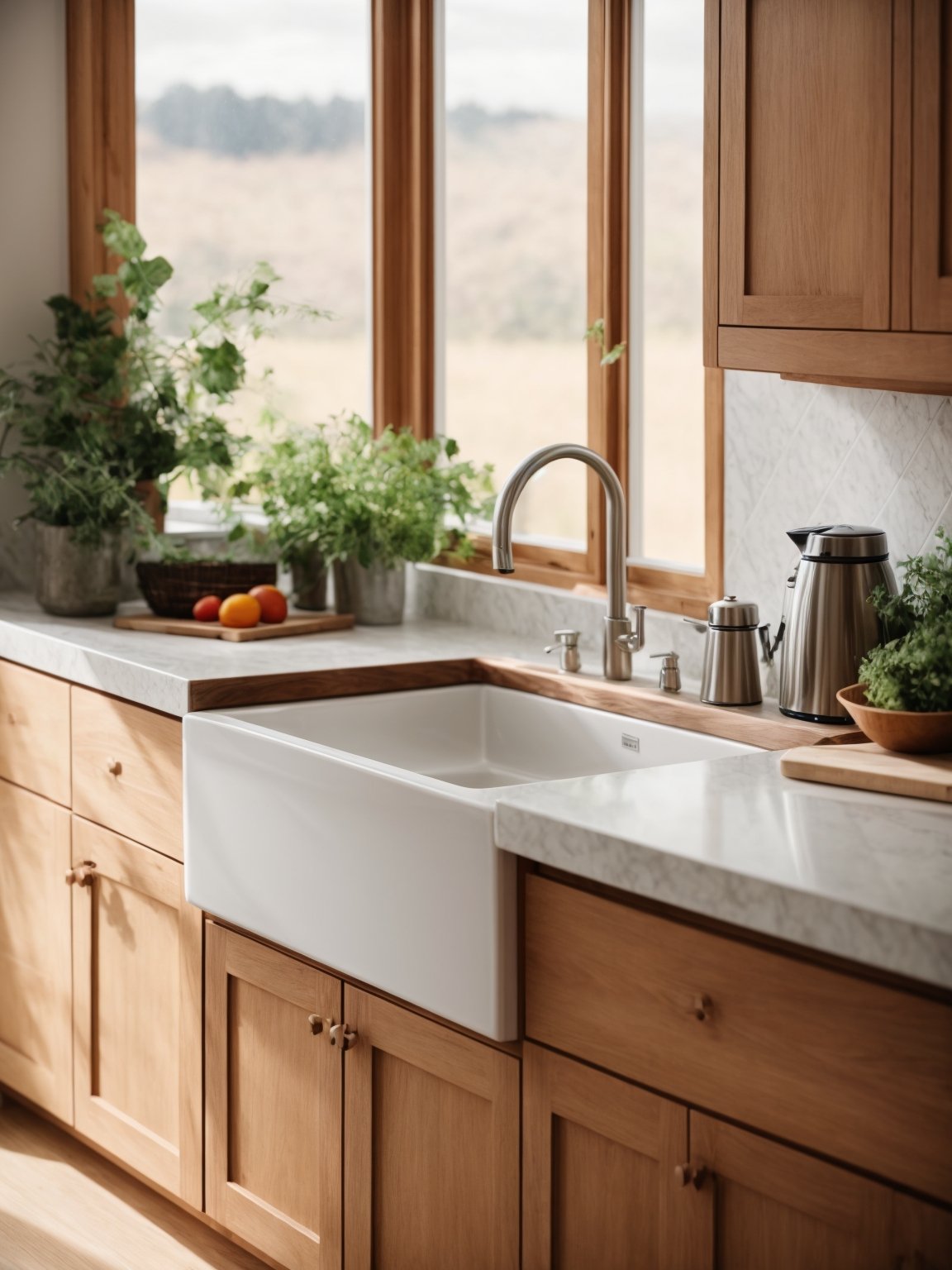When it comes to designing your dream kitchen, every detail matters, and the choice of kitchen sink cabinet plays a crucial role in both functionality and aesthetics. In this comprehensive guide, we will explore the various types of kitchen sink cabinets, including standalone, corner, and base cabinets. From the size and material to the style, we will delve into every aspect to help you make informed decisions that align with your unique preferences and needs. Whether you’re envisioning a kitchen cabinet with a sink, seeking the perfect kitchen sink cabinet combo, or exploring options for a kitchen corner sink cabinet, this guide is tailored to provide valuable insights.

I. Standalone Kitchen Sink Cabinets
A. Advantages of Standalone Cabinets
Standalone kitchen sink cabinets offer a level of flexibility that appeals to many homeowners. They provide independence from surrounding structures, allowing for creative design choices.
- Flexibility in Design: Standalone cabinets provide the freedom to position your sink wherever it best suits your workflow and design preferences. This is especially beneficial for open-concept kitchens, where the placement of elements can significantly impact the overall aesthetic.
- Ease of Installation: If you’re a fan of DIY projects or wish to minimize installation costs, standalone cabinets are a great option. They often require less complicated installation processes, making them accessible for those with various skill levels.
- Customization Options: Standalone cabinets open the door to a world of customization. From unique materials and finishes to diverse styles, homeowners can add a personal touch to their kitchen space, making it a true reflection of their taste.
B. Considerations When Choosing Standalone Cabinets
- Space Availability: Before selecting standalone cabinets, measure the available space in your kitchen. Ensuring that the chosen cabinet fits seamlessly without overwhelming the area is crucial for maintaining balance in your kitchen design.
- Plumbing Considerations: Given the flexibility in placement, careful planning for plumbing requirements is essential. Make sure that water supply and drainage connections are easily accessible, facilitating a smooth and efficient installation process.
II. Corner Kitchen Sink Cabinets
Corner kitchen sink cabinets are a strategic solution for maximizing space efficiency and utilizing often overlooked corner areas.

A. Advantages of Corner Cabinets
- Space Optimization: Corner cabinets excel at making the most of otherwise unused space. They efficiently utilize corners, providing additional storage without compromising accessibility.
- Improved Workflow: Placing the sink in a corner cabinet can enhance your kitchen’s workflow. With a well-designed layout, you can create a more efficient and organized space, allowing for smoother meal preparation and cleanup.
- Aesthetically Pleasing: Beyond their practical benefits, corner cabinets can be aesthetically pleasing. With the right design and materials, they can contribute to a unique and visually interesting aspect of your kitchen.
B. Considerations When Choosing Corner Cabinets
- Access and Functionality: To maximize usability, consider corner cabinets with features such as pull-out shelves or rotating trays. This ensures that every inch of the space is easily accessible.
- Design Cohesiveness: Ensure that the design of the corner cabinet complements your overall kitchen design. Coordinating materials, finishes, and styles will contribute to a cohesive and harmonious aesthetic.
III. Base Kitchen Sink Cabinets
Base kitchen sink cabinets form the foundation of the sink area, providing essential support and storage.
A. Advantages of Base Cabinets
- Structural Support: Base cabinets offer crucial structural support to the sink and countertop, ensuring stability and longevity. They form the backbone of the sink area, contributing to the overall durability of the kitchen design.
- Ample Storage: Beyond their structural role, base cabinets provide valuable storage space for kitchen essentials. From cleaning supplies to pots and pans, well-designed base cabinets can effectively organize and declutter your kitchen.
- Variety of Styles: Base cabinets come in a variety of styles, allowing homeowners to choose options that complement their kitchen design. Whether you prefer a traditional, contemporary, or transitional style, there are base cabinets to suit every taste.
B. Considerations When Choosing Base Cabinets
- Quality of Materials: Given their foundational role, invest in high-quality materials for base cabinets. Choose materials that can withstand the demands of daily kitchen use and exposure to water, ensuring longevity and durability.
- Drawer and Door Options: Consider the types of drawers and doors offered by base cabinets. Features such as soft-close drawers and doors enhance the overall functionality and user experience, adding a touch of luxury to your kitchen.

IV. Factors Influencing Cabinet Choices
A. Size
- Kitchen Layout: Tailor the size of your sink cabinet to the layout of your kitchen. A spacious kitchen may accommodate larger cabinets, while smaller kitchens may benefit from more compact options.
- Storage Needs: Assess your storage needs to determine the appropriate size. Families with extensive kitchenware may require larger cabinets, while individuals with minimal items may opt for smaller, space-saving solutions.
B. Material
- Durability: The material of your cabinets significantly impacts their durability. Common materials include wood, laminate, stainless steel, and MDF. Choose a material that aligns with your lifestyle and maintenance preferences.
- Aesthetic Appeal: Beyond durability, the material contributes to the overall aesthetic of your kitchen. Select a material that complements your chosen style, whether it’s rustic, modern, or classic.
C. Style
- Consistency with Overall Design: Ensure that the style of your cabinet aligns with the overall design of your kitchen. Consistency in style creates a harmonious and visually appealing space.
- Personal Preference: Consider your personal preferences and taste. Whether you prefer a sleek and modern look or a warm and traditional feel, choose a style that resonates with you.

V. Conclusion
In conclusion, choosing the right kitchen sink cabinet is a significant decision that involves careful consideration of various factors. Whether you’re envisioning a kitchen cabinet with a sink, exploring options for a kitchen sink cabinet combo, or seeking the perfect kitchen corner sink cabinet, understanding the advantages and considerations of each type will guide you toward a choice that suits your needs and preferences.
Remember, the size, material, and style of your cabinets play pivotal roles in both the functionality and aesthetics of your kitchen. By making informed decisions based on your unique requirements, you can create a kitchen space that not only meets your practical needs but also reflects your personal style and enhances the overall ambiance of your home. Happy cabinet hunting!
